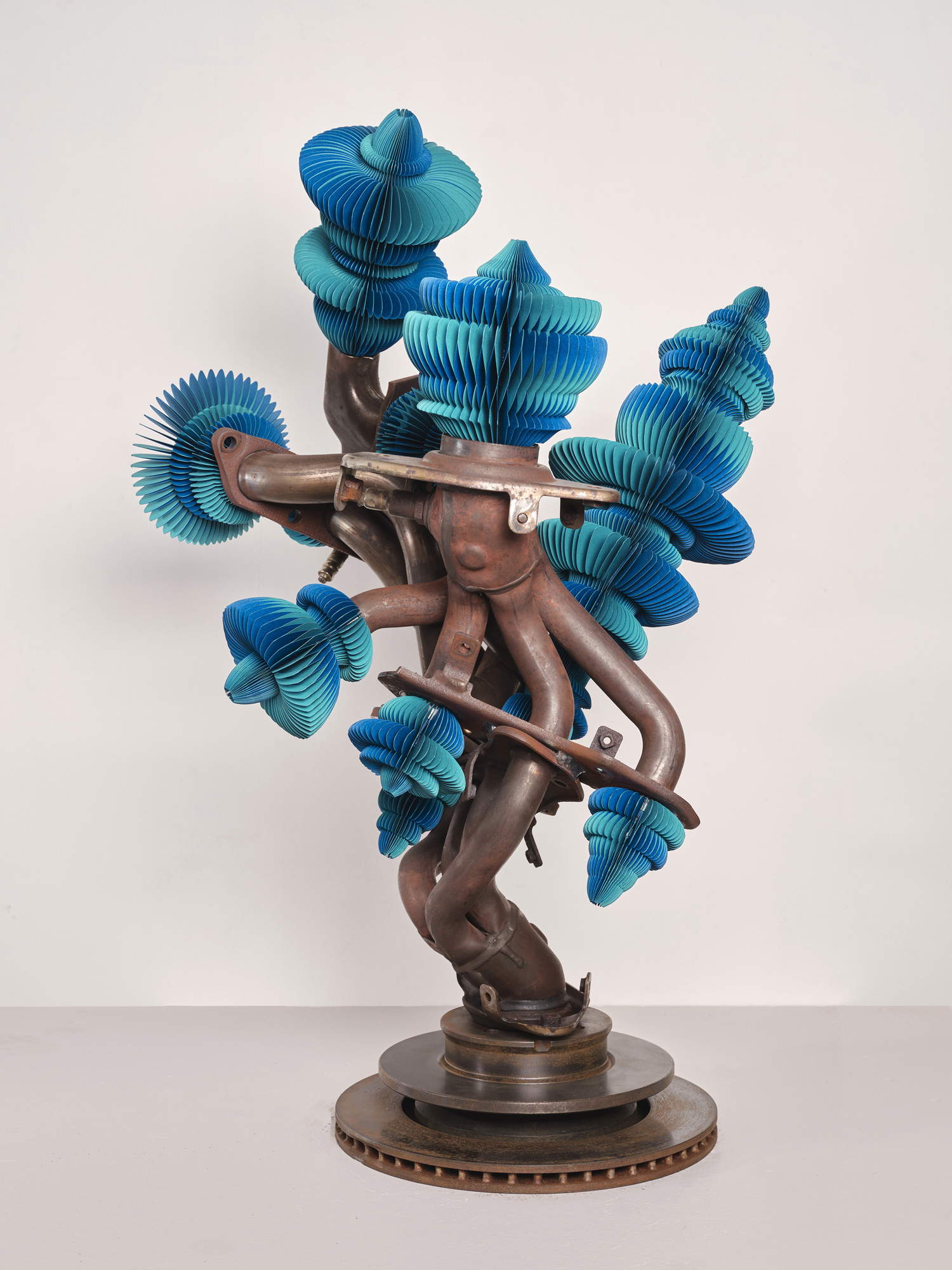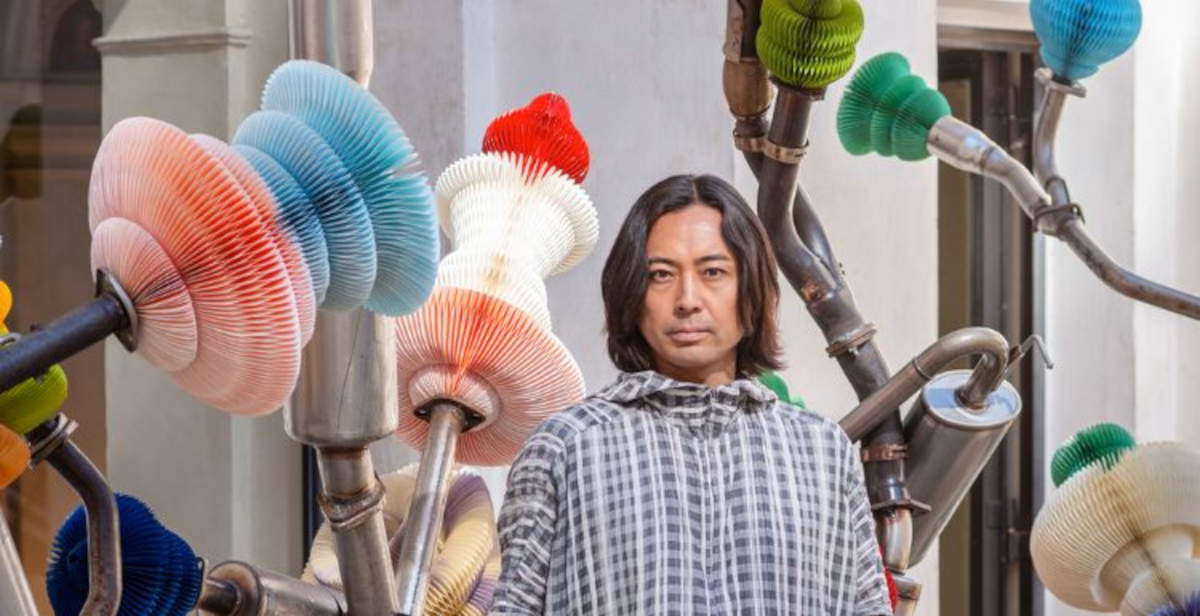From November 15, 2025 to February 22, 2026, Palazzo Tozzoni in Imola will host Keita Miyazaki. The Garden of Vanities, an exhibition project curated by Diego Galizzi, director of Imola Musei, and Riccardo Freddo, head of institutional relations at the Rosenfeld Gallery in London. The exhibition, born from a collaboration agreement between Imola Musei and the Rosenfeld Gallery, marks a new confrontation of Imola’s historical heritage with contemporary language, offering the public an exhibition itinerary centered on the aesthetics of fragility and critical reflection on modernity.
Japanese artist Keita Miyazaki, born in Tokyo in 1983, is distinguished by a creative approach that integrates industrial materials and organic elements in highly original ways. His hybrid sculptures combine mechanical scraps, particularly car parts, with delicate paper origami, creating visual and textural contrasts that become the center of the author’s poetics. The insertion of fragile materials into seemingly solid structures produces an aesthetic tension that invites reflection on the relationship between technological progress and the vulnerability of contemporary society.
“The exhibition project that we have built here in Imola,” comments Diego Galizzi, “stems from the desire to offer the city an opportunity to mirror the subtle poetics of Keita Miyazaki, who in turn finds in this land of motors a formidable stage where his message so full of dissonance can be further amplified. The interweaving of classical forms and futuristic hints in relation to the refinement of space will be a source of a seductive aesthetic experience. We want the halls of Palazzo Tozzoni to be transformed into a great garden of the ephemeral, where the dimension of industrial wreckage and waste aims to surpass itself, provided, however, that it merges with something seemingly very fragile, because it is made of paper, indeed, because it is charged with humanity: origami.”
“Keita Miyazaki’s work reminds us that beauty can arise from contrast, from the encounter between what is meant to last and what is ephemeral,” explains Riccardo Freddo. “Her sculptures, made of metal and paper, are metaphors for resilience and rebirth, but also for a profoundly human fragility. Bringing this research to Palazzo Tozzoni means giving life to a dialogue between different eras and cultures, where the memory of the past and the echo of the future coexist in a balance that is always precarious, but poetically necessary.”
Underlying Miyazaki’s research is Japanese culture and its inherent contradictions: on the one hand, the drive toward progress and technological innovation, and on the other, the depth of a thousand-year-old tradition. The experience of the 2011 tsunami disaster played a crucial role in shaping the artist’s poetics. The vision of devastated landscapes and car bodies submerged in mud prompted Miyazaki to consider mechanical fragments as symbols of the vulnerability of an industrial world that can be overwhelmed by the force of nature.


Keita Miyazaki, born in Tokyo in 1983, lives and works between Japan and the United Kingdom. He attended Tokyo University of the Arts and the Royal College of Art in London, developing a distinctive visual language that relates mechanical fragments and plant forms. His works have been presented in internationally prominent museums and galleries, including the Victoria and Albert Museum, the Centre Pompidou, the Palais de Tokyo, and the Jameel Arts Centre, and are included in such prestigious collections as the Benetton Foundation, the Mori Arts Centre, and the Daiwa Foundation.
 |
| Keita Miyazaki in Imola: an exhibition to reflect on progress and vulnerability in contemporary society |
Warning: the translation into English of the original Italian article was created using automatic tools. We undertake to review all articles, but we do not guarantee the total absence of inaccuracies in the translation due to the program. You can find the original by clicking on the ITA button. If you find any mistake,please contact us.